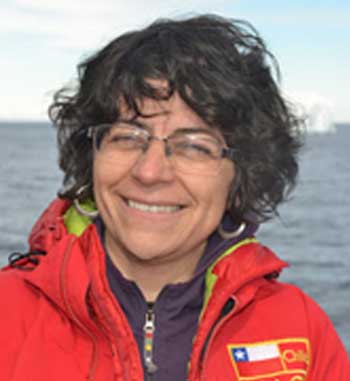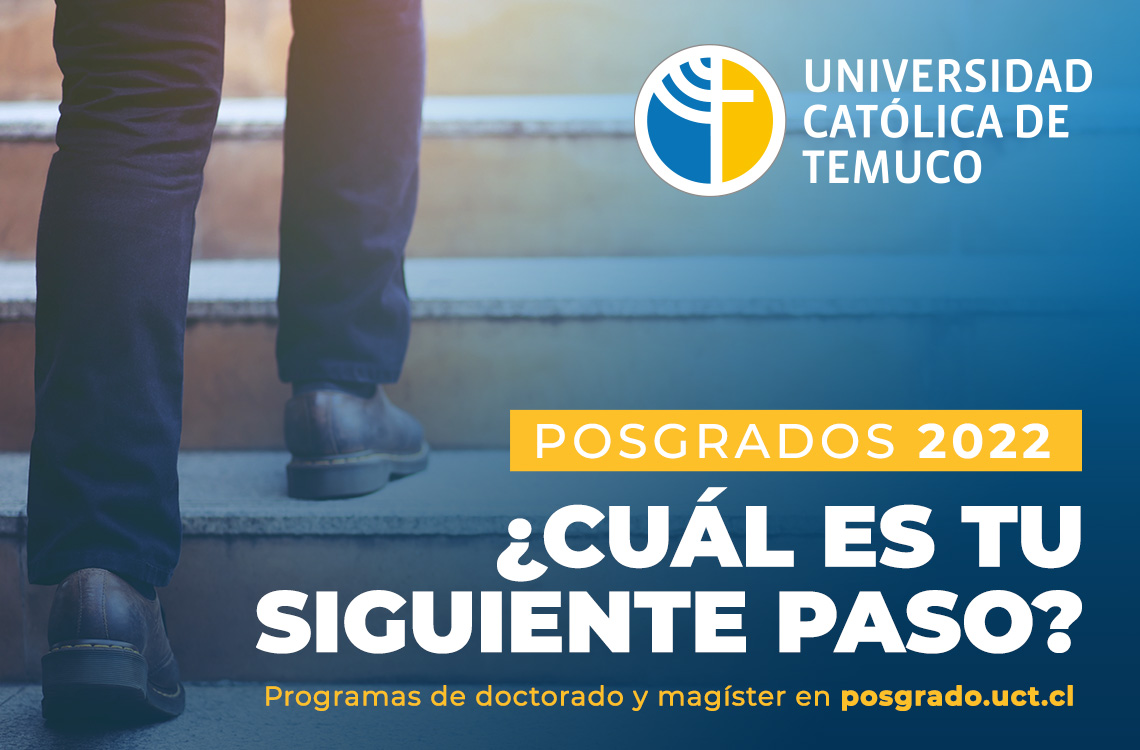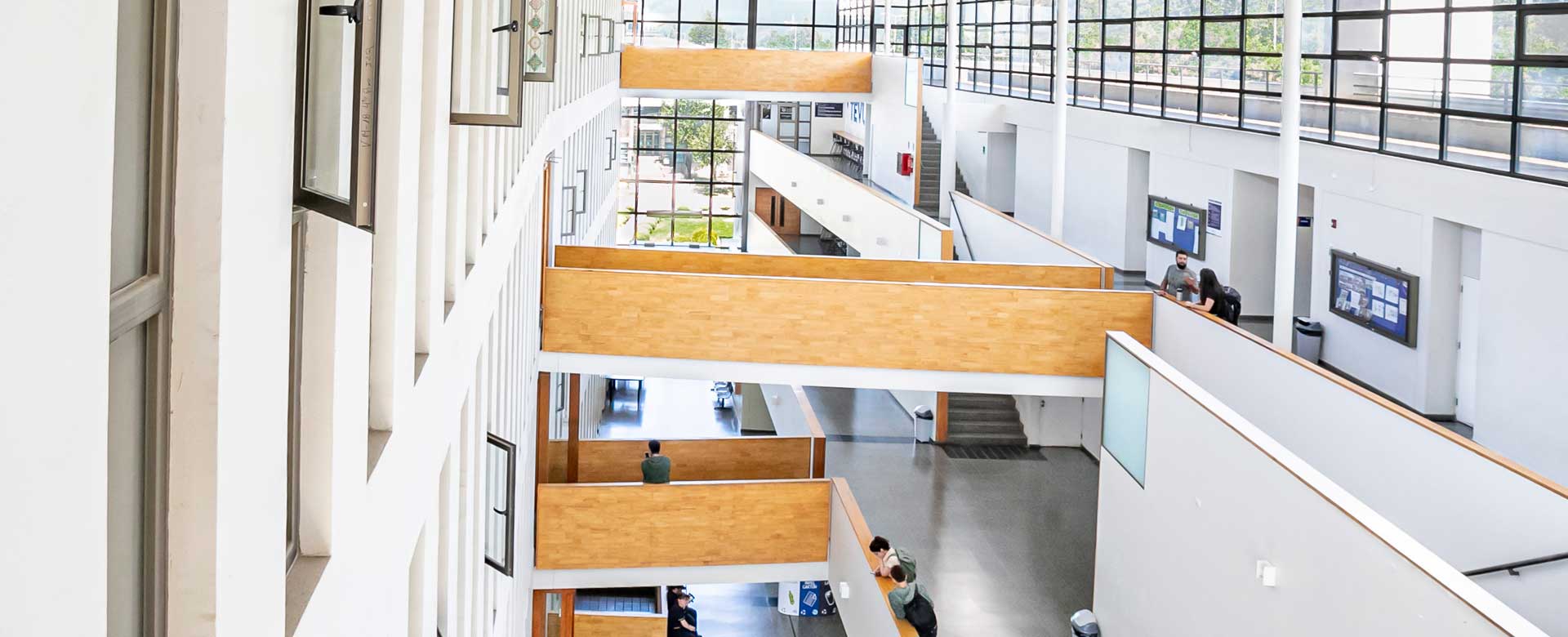Título: Profesora de Ciencias Naturales y Biología, Pontificia Universidad Católica de Chile. Chile
Grado: Doctora en Recursos Naturales, Universidad Justus Liebig de Giessen, 2022, Alemania.
Correo electrónico: mcasanova@uct.cl
Teléfono: 962097709
Oficina: Laboratorio de Ecofisiología Vegetal, Edificio Luis Rivas del Canto.
Facultad: Recursos Naturales
Líneas de investigación: Ecofisiología vegetal, y de hongos liquenizados, Calentamiento climático, Biota no vascular (musgos, líquenes, y hongos) de ambientes extremos del desierto de Atacama, como de Antártica.

MARÍA ANGÉLICA CASANOVA KATNY
DEPARTAMENTO
Como ecofisióloga vegetal estoy interesada en la ecologia funcional de los plantas (vasculares y no vasculares) y hongos liquenizados en ambientes extremos y sus respuestas y mecanismos de adaptación al nuevo escenario de cambio climático. Mis primeras investigaciones se han centrado en la ecofisiología de especies antárticas expuestas al calentamiento global, donde he realizado estudios en pastos, musgos y líquenes. En estudios de campo he instalado desde hace 10 años experimentos de calentamiento pasivo en Peninsula Fildes, Isla Rey Jorge, en las Shetland del Sur. Estos estudios se han centrado en la fisiología y ecología de estas especies vasculares y no vasculares, analizando el metabolismo fotosintético, de carbohidratos, antioxidante y la reproducción particularmente de musgos dioicos.
También he incursionado en el ámbito de la biotecnología, principalmente en la búsqueda de compuestos de organismos de ambientes extremos que tengan actividad biológica, especialmente antibacteriana o anti biopelículas. En este caso he participado en la dirección alterna de dos proyectos FONDEF IDeA (CA12I0224 ID10i12284; ID16i10286).
2023. Beck, A.; Casanova-Katny, A.; Gerasimova. Metabarcoding of Antarctic Lichens from Areas with Different Deglaciation Times Reveals a High Diversity of Lichen- Associated Communities. J. Genes 2023, 14,1019. https://doi.org/10.3390/ genes14051019. Publicada
2023. Barták, M.; Hájek, J.; Halıcı, M.G.; Bednarˇíková, M.; Casanova-Katny, A.; Váczi, P.; Puhovkin, A.; Mishra, K.B.; Giordano, D. Resistance of Primary Photosynthesis to Photoinhibition in Antarctic Lichen Xanthoria elegans: Photoprotective Mechanisms Activated during a Short Period of High Light Stress. Plants 2023, 12, 2259. https://doi.org/10.3390/ plants12122259. Publicada
2022. Palfner Götz, Farías Javiera & Casanova-Katny, Angélica. Registros nuevos de macrohongos asociados a un sauzal (Salix babylonica) en la Estación de Biología Terrestre de Hualpén, Región del Biobío, Chile Gayana Botánica. Publicado
2022. Vergara-Barros, P.; Alcorta, J.; Casanova-Katny, A.; Nürnberg, D.J.; Díez, B. Compensatory Transcriptional Response of Fischerella thermalis to Thermal Damage of the Photosynthetic Electron Transfer Chain. Molecules https://doi.org/ 10.3390/molecules2723851511:2463. Publicada
2022. Marín, C.; Barták, M.; Palfner, G.; Vergara-Barros, P.; Fernandoy, F.; Hájek, J.; Casanova-Katny, A. Antarctic Lichens under Long-Term Passive Warming: Species-Specific Photochemical Responses to Desiccation and Heat Shock Treatments Plants https://doi.org/10.3390/plants11192463. Publicada
2022. Palfner Götz, Felipe González Steffan Valdés, Josefa Binimelis, Paolo Alzerreca, Alexis Ceballos, Roberto Sepúlveda & Angélica Casanova-Katny. Battarrea phalloides (Fungi, Basidiomycota) en Chile central: ¿un hongo mensajero de la megasequía? Battarrea phalloides (Fungi, Basidiomycota) in central Chile: a fungal messenger of the megadrought? Gayana Botánica 1:71-76. Publicada
2021. Jonas J. Lembrechts, Johan van den Hoogen, Juha Aalto, Michael B. Ashcroft et a. (más de 400 autores, yo aparezco línea 12). 2022 Global maps of soil temperature Global Change Biology, https://doi.org/10.1111/gcb.16060. Publicada
2021. Bokhorst, S., Convey, P., Casanova-Katny, A. et al. Warming impacts potential germination of non-native plants on the Antarctic Peninsula.
2021. Alla Orekhova Miloš Barták Angelica Casanova‐Katny Josef Hájek 2021 Resistance of Antarctic moss Sanionia uncinata to photoinhibition: Chlorophyll fluorescence analysis of the samples from Western and Eastern coast of the Antarctic Peninsula.
2021. Barták, M.; Hájek, J.; Orekhova, A.; Villagra, J.; Marín, C.; Palfner, G.; Casanova-Katny, A. 2021, Inhibition of Primary Photosynthesis in Desiccating Antarctic Lichens Differing in Their Photobionts, Thallus Morphology, and Spectral Properties.
2021. Harańczyk, H., Strzałka, K., Kubat, K. A. Andrzejowska, M. Olech, D. Jakubiec, P. Kijak, G. Palfner, Angélica Casanova‐Katny, A comparative analysis of gaseous phase hydration properties of two lichenized fungi: Niebla tigrina (Follman) Rundel & Bowler from Atacama Desert and Umbilicaria antarctica Frey & I. M. Lamb from Robert Island, Southern Shetlands Archipelago, maritime Antarctica.
2020. Götz palfner, Felipe Galleguillos, Norbert Arnold, Angélica Casanova-Katny, Egon Horak. Sequestrate syndrome in Bondarzewia guaitecasensis (Fungi, Basidiomycota)? The case of Hybogaster giganteus revisited.
2020. Perera-Castro, Alicia V., Melinda J. Waterman, Johanna D. Turnbull, Michael B. Ashcroft, Ella McKinley, Jennifer R. Watling, Jessica Bramley-Alves, Angelica Casanova-Katny, Gustavo Zuniga, Jaume Flexas and Sharon A. Robinson. It Is Hot in the Sun: Antarctic Mosses Have High Temperature Optima for Photosynthesis Despite Cold Climate.
2020. Johana Villagra, David Alors & Angélica Casanova-Katny. Contribución al conocimiento de la biota liquénica de la Reserva Nacional Katalalixar, Patagonia, Chile
2020. Sandra Troncoso, Angélica Casanova-Katny, Catalina Marin & Goetz Palfner, Nuevos registros de hongos desertícolas en los Parques Nacionales Nevado Tres Cruces y Pan de Azúcar, Región de Atacama, Chile
2020. Catalina Marín-Cruz, Sandra Troncoso, Goetz Palfner y Angélica Casanova-Katny. Líquenes cortícolas del Parque Nacional Pan de Azúcar, Sector Las Lomitas. Aceptado Biodiversidata.
2020. Götz Palfner, Cristóbal Araneda, Norbert Arnold y Angélica Casanova-Katny. Inventario preliminar de macrohongos de la Reserva Nacional Nonguén, Región del Biobío, con énfasis en especies en categoría de conservación
2019. Prather, Hannah M., Angélica Casanova-Katny, Andrew F. Clements, Matthew W. Chmielewski, Mehmet A. Balkan, Erin E. Shortlidge, Todd N. Rosenstiel and Sarah M. Eppley. Species-specific effects of passive warming in an Antarctic moss system.
2019. Andreas Beck, Julia Bechteler, Angélica Casanova-Katny & Iva Dzhilyanova. The pioneer lichen Placopsis in maritime Antarctica: Genetic diversity of their mycobionts and green algal symbionts, and their correlation with deglaciation time.
2019. Casanova-Katny, Angélica, Miloš Barták, Catalina Gutierrez. Open top chamber microclimate may limit photosynthetic processes in Antarctic lichen: Case study from King George Island, Antarctica.
2018. Dockyu Kim, Ha Ju Park, Jung Ho Kim, Ui Joung Youn, Yung Hun Yang, Angélica Casanova-Katny, Cristina Muñoz Vargas, Erick Zagal Venegas, Hyun Park, and Soon Gyu Hong. Passive warming effect on soil microbial community and humic substance degradation in maritime Antarctic region
2017. Cavieres Lohengrin A.; Sanhueza, Ana Karen; Torres-Mellado, Gustavo and Casanova-Katny, Angélica. Competition between native Antarctic vascular plants and invasive Poa annua changes with temperature and soil nitrogen availability
2017. Shortlidge, E.; Eppley, S.; Kohler, H.; Rosenstiel, T.; Zuñiga, G.; Casanova-Katny, A. Warming reduces the physiological barrier to reproductive success in an Antarctic moss
2016. Casanova-Katny A. Torres-Mellado G. & Eppley S. Reproductive output of mosses under experimental warming on Fildes Peninsula, King George Island, maritime Antarctica
2016. M. Ashcroft, A. Casanova-Katny, K. Mengersen, T. Rosenstiel, J. Turnbull, J. Wasley, M. Waterman, G. Zuniga, S. Robinson. Bayesian methods for comparing species physiological and ecological response curves.
2016. Zúñiga-González Paz, Zúñiga G. E., Pizarro M., Casanova-Katny A. Soluble carbohydrate content variation in Sanionia uncinata and Polytrichastrum alpinum, two Antarctic mosses with contrasting desiccation capacities
2016. Marc Oliva, Jesús Ruiz-Fernández, & Andrés Zarankin, Angélica Casanova-Katny, Jordi Nofre. Geoecology and historical heritage in the ice-free area of Elephant Point (Antarctica). Proposal for future environmental protection
2015. Dörttel S, A. Stevens, J. Six, R. Merckx, K. Van Oost, M. Casanova Pinto, A. Casanova-Katny, C. Muñoz, M. Boudin, E. Zagal Venegas, P. Boeckx. Soil carbon storage controlled by interactions between geochemistry and climate
2015. Casanova-Katny A., M. Pizarro, M. Caballero, R. Cordero, G. Zúñiga Non-structural carbohydrate content in cryptogamic Antarctic species after two years of passive warming on the Fildes Peninsula
2014. Casanova-Katny A., Torres-Mellado G. A., Palfner G., Cavieres L. A. Do Antarctic lichens modify microclimate and facilitate vascular plants in the maritime Antarctica? A comment to Molina-Montenegro et al. (2013)
2012. Casanova-Katny M. A. & Cavieres L. Antarctic Moss carpets facilitate growth of Deschampsia antarctica but not its survival G. Torres-Mellado, M. A.
2012. Casanova-Katny & G. Palfner Mycotrophy in Gilliesieae, a threatened and poorly known tribe of Alliaceae from central Chile
2011. Casanova Katny M. A., Torres-Mellado G. A., Palfner G., Cavieres L. A. The best for the guest: high Andean nurse cushions of Azorella madreporica enhance arbuscular mycorrhizal status in associated plant species
2011. Torres-Mellado G. A., Jaña R., Casanova-Katny M. A. Antarctic hairgrass expansion in the South Shetland archipelago and Antarctic Peninsula revisited
2018-2022. Penguin colony influence on Antarctic vegetation. Proyecto FONDECYT 1181745. Investigador responsable
2017-2020. Ecophysiology of Antarctic and Atacama desert lichens: freezing and deep dehydration mechanism under natural conditions and under passive warming experiments. Proyecto INACH Regular (RT-27-16). Investigador responsable
2017-2020. Dipterans in sub-Antarctic and Antarctic regions: are they ready for the changes? Proyecto INACH Regular. Co-Investigador
2017-2019. PEPTARAM: Peptaiboles con propiedades antibacterianas contra bacterias patógenas humanas multiresistentes. Proyecto FONDEF IdeA id16i10286. Co-Investigador
2014-2017. Metabolomic responses of the Antarctic mosses Sanionia uncinata and Polytrichastrum alpinum to global warming. Proyecto FONDECYT 1140189. Co-Investigador
2012-2015. Assessing the importance of moss carpets for the establishment of native plants in the Antarctic under a global change scenario. Proyecto FONDECYT N° 1120895. Investigador responsable
2012-2014. Actividad antibacteriana de liquenes antárticos contra bacterias patógenas multiresistentes. Proyecto FONDEF IdeA Nº CA12I0224. Co-Investigador (Director alterno)
2010-2012. Epidemiologia del daño foliar del pino (DFP) y ciclo biológico de P. pinifolia: bases para una estrategia de control integrado. Proyecto INNOVA BIOBIO (08-PC S1-445). Co-Investigador (Director alterno)
2007-2011. Respuestas ecofisiológicas de la flora antártica bajo un escenario de calentamiento global. Proyecto concurso regular Instituto Antártico Chileno (INACH T-0307). Investigador responsable


